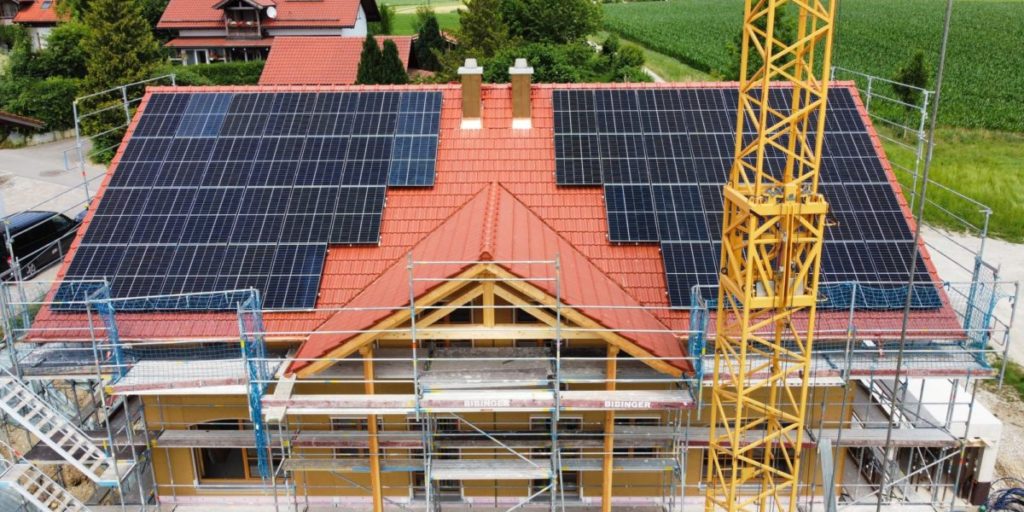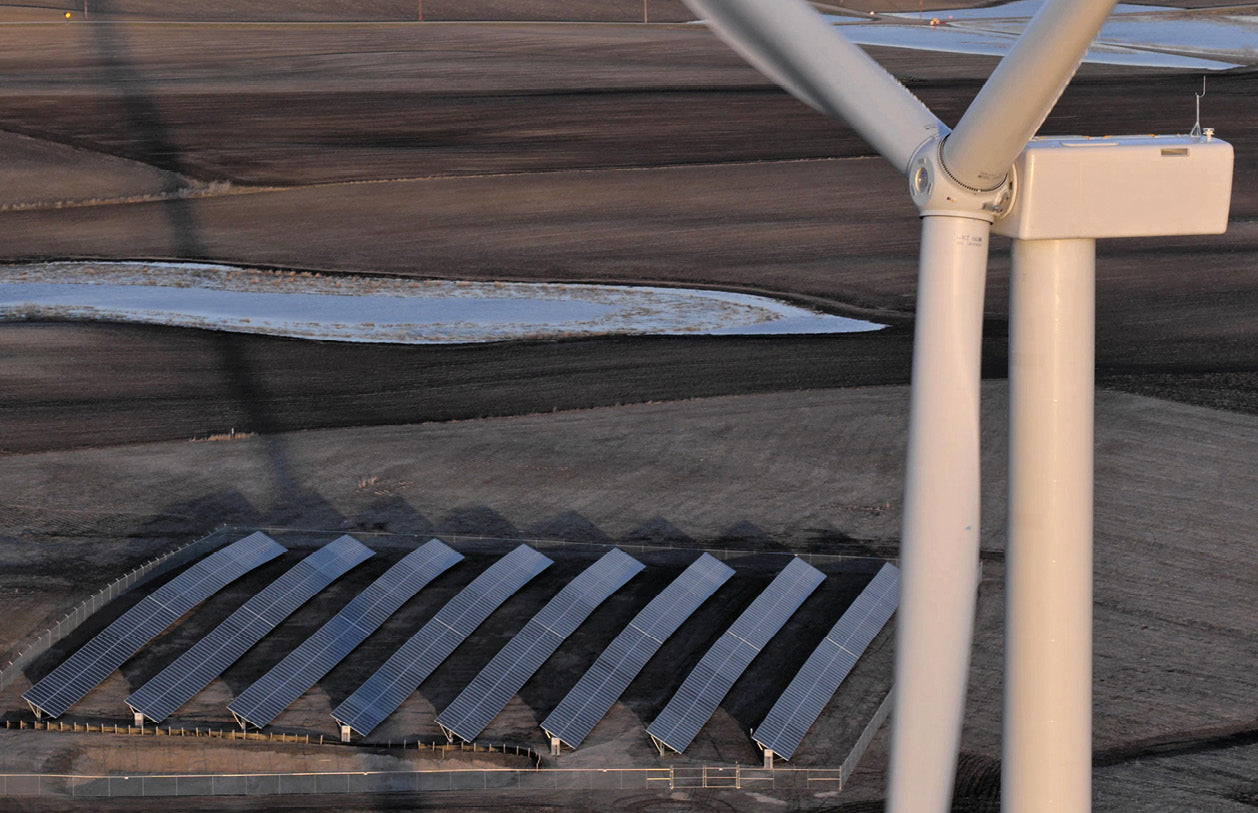https://www.pv-magazine.com/2022/09/10/the-weekend-read-what-is-the-future-of-solar-for-esg-finance/
The weekend read: What is the future of solar for ESG finance?

According to the IEA, domestically produced solar PV modules, including polysilicon, ingots, wafers, cells, and module assembly, need to operate for just three to five months before they’ve generated enough clean power to cover their manufacturing-related emissions.
Meyer Burger
From pv magazine 09/2022
This August saw ratings giant Moody’s predict that the issue of green, social, sustainability, and sustainability linked (GSSS) bonds will reach $1 trillion in 2022. Bloomberg Intelligence has predicted that global ESG assets are on track to exceed $53 trillion by 2025, representing more than a third of all assets under management. When a third of the world’s investments are ESG, or Environmental, Social, and Governance, that’s no longer a trend but a transformation.
Green finance
![]() Against a backdrop of rising energy prices, the Russian-Ukraine conflict, the ongoing pandemic, and a worsening climate crisis, the UP Initiative focuses on green finance. How can this sector help address these issues and what needs to be done to achieve positive progress? Discover more here
Against a backdrop of rising energy prices, the Russian-Ukraine conflict, the ongoing pandemic, and a worsening climate crisis, the UP Initiative focuses on green finance. How can this sector help address these issues and what needs to be done to achieve positive progress? Discover more here
For companies that create a product that is already aligned with that direction of travel, such as solar creating a product for low carbon power generation, that seems a perfect match. What we’re beginning to see, however, is a shift towards where operational sustainability is becoming a must have, no matter the product. As Mia d’Adhemar, Head of GRI Sector Standards puts it, “the foundation of sustainability reporting is for an organization to be transparent about its impacts on the economy, environment, and people. These impacts can be negative or positive, short term or long term, intended or unintended, and reversible or irreversible.”
Adverse impacts
Under the EU’s proposed sustainability reporting guidelines, for example, the impact of the business on the wider economy, environment, and society must be explored and reports must be made on “potential adverse impacts” of the business. While the final shape of the guidelines has yet to be agreed, this will require sustainability reporting for any company wishing to access funding under the EU Taxonomy framework for sustainable activities. That is going to channel significant funding and means that operational sustainability will become as important as products.
Kent Halliburton, president and COO of bitcoin-mining platform Sazmining, points out the role of solar in helping other companies achieve their ESG criteria and net zero goals: “We can see this if we look at the growth in solar bond purchases from investment firms. From January to March 2022, we’ve already seen sales of about $2 billion worth of solar bonds, doubling the amount sold during the same period in 2020 and 2019.”

Solar appeal
Solar is massively appealing as a net zero product, one which generates low carbon power. According to the International Energy Agency’s (IEA’s) recent report on supply chains, domestically produced solar modules, including polysilicon, ingots, wafers, cells, and module assembly, need to operate for just three to five months before they’ve generated enough clean power to cover their manufacturing-related emissions. They are now also lower in price than most alternatives.
Some have expressed concern that solar prices will continue to rise, with 2021 seeing the reversal of a decade long downward trend. Much of that was due to increasing cost of polysilicon but Peter White, chief executive of Rethink Technology Research, says “the supply chain is getting tighter due to the shortage of polysilicon, glass, and certain metals for solar, but this is mostly artificial, with the US and India using tariffs to keep Chinese-made solar out of their markets. And it will go away by the end of 2024, as more polysilicon factories come online.”
Offering a low carbon power generation solution at a low cost may make solar an obvious match for ESG funds. Increasingly, however, the sector is being asked how to address concerns about toxic pollution in production, resource management, slavery in the supply chain, and more.
Supply chain challenges
Adham Makki, decarbonization research manager at EcoAct, an Atos company, warns that solar cell manufacturing is a resource-intensive process, requiring a substantial amount of water and industrial materials. “The manufacturing process also involves toxic waste, unsustainable mining practices and habitat loss, all of which need careful consideration if we are to meet the Sustainable Development Goals (SDGs),” he says.
The issue of labor practices is increasingly high profile as well. In 2021, the Helen Kennedy Centre released a report, exploring accusations of forced labor in the Xinjiang region, which is responsible for as much as 50% of global polysilicon supply.
The United States has already imposed restrictions on imports from the Xinjiang region and the US-based Solar Energy Industries Association (SEIA) launched a pledge for companies to commit to removing such practices from the supply chain, which companies including Tesla and JinkoSolar US have all signed.
“The sector takes reports of forced labor in its supply chain extremely seriously. SolarPower Europe is currently hard at work, in close contact with our members, to increase supply chain transparency. In partnership with Solar Energy UK, SolarPower Europe is developing a Supply Chain Monitoring Programme to ensure that solar modules entering Europe comply with international sustainability and labor standards,” says Dries Acke, policy director at SolarPower Europe. Undoubtedly, such concerns will be an issue for ESG investment.
Popular content
New opportunities
There are huge opportunities for the solar sector. The demand and scale required in the sector is immense, with expectations that it will provide over 16% of global electricity by 2050. That means demand for chemical elements such as gallium and indium, and metals like silver and copper. Reliance on products, such as aluminum, that are carbon intensive in manufacture, further mean other sectors must decarbonize to lower emissions for solar. All of this will drive demand for new materials and new technologies, as well as innovative ways of using solar.
In terms of increasing land use challenges, new approaches are already in play which are driving market growth and can be used to argue ESG benefit. The EU has projected that 25% of the region’s electricity needs could be met through rooftop solar alone. Floating PV (FPV) symbiotically combines power generation with the shade for bodies of water, limiting evaporation. Meanwhile, bifacial modules are helping drive agri-PV, adding biodiversity and nature protection benefits through shade, cutting water use, as well as protecting crops and livestock from inclement weather.
Recycling is also going to play an important role in meeting demand. “Both economic and environmental benefits can be attained from recycling by increasing the security of the supply of raw materials, and by preventing materials within solar panels that hold economic value, like copper and silver, from ending up in landfills. Reusing old materials will eventually lower the demand for new materials as well,” says Acke.
Worldwide, the recycling of materials is low. This is compounded by a lack of financial incentives to activate recycling measures. Yet a supportive regulatory framework could transform this, allowing the solar sector to make the most efficient and effective use of depleting resources.
Certainly in the US and Canada there is increasing focus on recycling. Jason Smith, sustainable supply and value Chain expert at PA Consulting, says “they’re looking at individual component parts and processes, probably 10% of the market moving forward that can be reused. The challenge is that the PV supply chain is quite complex, involving silicon, copper, glass, and other materials. Recovery is labor intensive.”
A huge opportunity
Alan Duncan, founder of Solar Panels Network USA, says that the rise of ESG has made us even more aware of the need to pay attention to our supply chain and operational impacts.
“We’re working closely with our suppliers to make sure they meet our high standards for sustainability, and we’re constantly looking for ways to reduce our own environmental impact,” Duncan says. Action on some of the solar sector’s challenge is already taking place, opening new opportunities for the sector, and its supply chain, to grow.
There are inevitably going to be trade-offs for ESG and sustainability investors in terms of balancing supply chain concerns with the emissions reduction solar offers. To make such trade-offs there needs to be far greater understanding of, and transparency around, what is going on across the sector. That means traceability is going to be critical moving forward. This is an increasing demand across many sectors as buyers want to know what they’re getting.
While there are ratings for the solar sector, there are also many challenges in the ESG landscape due to the number of differing frameworks that are applicable and a lack of standardized reporting requirements.
As the EU sustainability framework comes into play, that single legislative framework will help cut through some of the noise. Smith believes we are facing a massive change in supply and manufacturing, and the solar sector needs to start implementing ESG factors into the supply chain if it wants to be able to access the billions in available capital to fund that shift. 
By Felicia Jackson
This content is protected by copyright and may not be reused. If you want to cooperate with us and would like to reuse some of our content, please contact: editors@pv-magazine.com.



